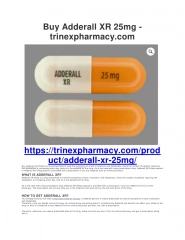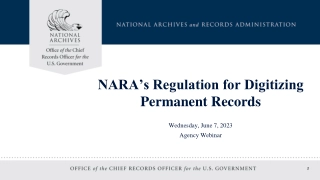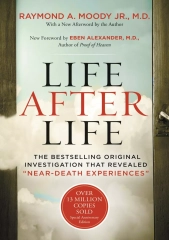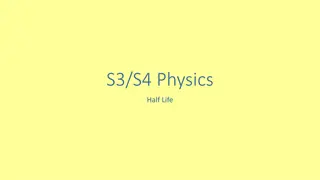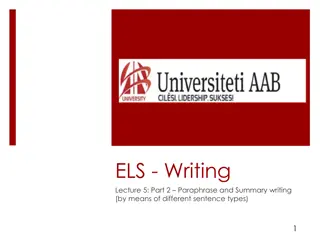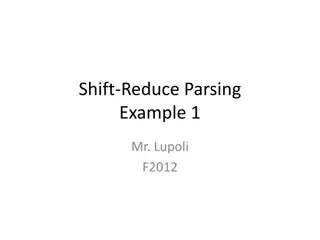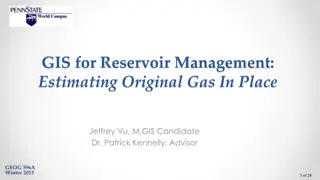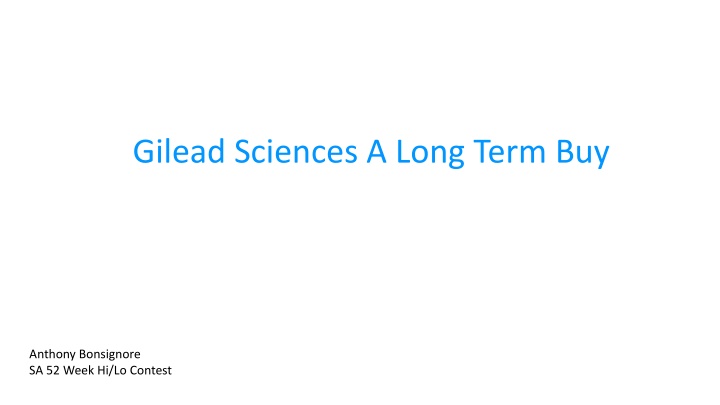
Gilead Sciences: Long-term Investment Prospects Amid Recent Challenges
"Explore the investment potential of Gilead Sciences, a biopharmaceutical company, despite recent setbacks in revenue and stock performance. Learn about their product portfolio, financial standing, and future outlook."
Download Presentation

Please find below an Image/Link to download the presentation.
The content on the website is provided AS IS for your information and personal use only. It may not be sold, licensed, or shared on other websites without obtaining consent from the author. If you encounter any issues during the download, it is possible that the publisher has removed the file from their server.
You are allowed to download the files provided on this website for personal or commercial use, subject to the condition that they are used lawfully. All files are the property of their respective owners.
The content on the website is provided AS IS for your information and personal use only. It may not be sold, licensed, or shared on other websites without obtaining consent from the author.
E N D
Presentation Transcript
Gilead Sciences A Long Term Buy Anthony Bonsignore SA 52 Week Hi/Lo Contest
Research-based biopharmaceutical company that discovers, develops and commercializes innovative medicines Ticker: GILD Operations in more than 30 countries across six continents.1 Recent Share Price: $66 2016 annual revenues of $30.4 billion1. Market Cap: $86bn More then $32 billion in cash & cash equivalents including long-term EV: $100.2bn marketable securities at year end 20161 Net Debt: $14.2bn Primary focus is on hepatitis immunodeficiency virus (HIV), liver diseases such as chronic hepatitis C virus (HCV) and hepatitis B infection (HBV). 52 Week Hi/Lo = $103.10 / $65.38 Gilead Is A Buy At Current Price Note: All references to market cap, enterprise value are based on 66$ share price. 1.307bn shares outstanding as filed in latest 10-K. (1) 2016 10-K
Gilead & Its 52 Week Low o Gilead has seen numerous factors over the recent year that have led to a decline in its stock price resulting in it hovering right above its 52 week low, such factors include: Weak 2017 guidance Decline in annual revenues in 2016 compared to 2015 Increased competition Non-diversified portfolio
Thesis Gilead has done a fantastic job over the past years and has developed into a large, successful biotech company with lots of cash. How come the stock is trading near its 52 week low then? -Recent developments have not been favorable for shareholders and the value of the company, resulting in a substantial decline in market capitalization. -While the company may be experiencing short term issues, including a decline in revenues they have an enormous amount of cash and resources that can be implemented to create a highly recognized brand and improve shareholder value over time. I am new to the biotech space, but it is quite clear from analyzing Gilead that they hit the holy grail with their HIV/HCV products. Since hitting the holy grail and producing substantial cash it s as if they have no clue what to do next. They have a low success rate of getting drugs through the FDA process and it s astonishing how non-diversified the company is, let alone how they have yet to even attempt to diversify. With declining revenues and a low approval rating through the FDA the company is running out of ways to create long term shareholder value. The best part about these events is they can be overcome. Gilead has the resources and cash to begin diversifying their businesses and combining that with their developing pipeline, overtime Gilead could become one of the most durable companies in America.
One of Three Things -In my opinion, 1 of 2 things will happen to the company in the near term future: 1. Continue operating like they are which overtime will bring substantial declines in revenue and profits due to declining market share, increased competition, wasteful large share buyback programs, low success rate through the FDA and a non-diversified portfolio. 2. Company begins diversifying its business to create a durable brand growing free cash flow and revenues over time. This could happen two ways, management after 3 years of telling shareholders they are looking for acquisitions finally do so, or an activist enters and implements much needed change to diversify and grow the business ( I believe we could very well see an activist soon due to the attractive value of the company at current levels ). Options 2 in my opinion is the most likely outcome to occur. If the company continues to do option 1 and continues to trade lower it is only a matter of time until the company s cash and resources become to attractive for an activist not to come in and try and push management to find ways to create more shareholder value. Gilead is not only near its 52 week low, but is down nearly 50% from its all-time high of $119.50 in June of 2015 and trades at just 8x FY 2017 estimates and is already much cheaper then it has been in years.
The good, the bad, the questionable The Good The Bad The Questionable Limited diversity among products Increasing competition Strong free cash flow Management Large margins Capital Allocation Decline in revenue streams High quality antiviral products Patent expirations Highest market share of any Weak 2017 guidance HIV/HCV drug maker $32.4bn of Cash & cash equivalents Undervalued 3.15% dividend yield
The Good The Good 2016 86% 2015 88% 2014 85% Gross Margins: EBITDA: N.I. Profit Margins Cash From Operation: Cash & Cash Equivalents: $18,791bn $23,291bn $16,315bn 45% 56% 49% Strong free cash flow $16,669bn $32.4bn $20,329bn $26.2bn $12,818bn $11.7bn Large margins Strong free cash flow and profit margins as seen above. High quality antiviral products $30+ billion in cash and cash equivalents including short term and long term Highest market share of any marketable securities at the end of 2016. HIV/HCV drug maker Antiviral drugs are medicines that cure or control virus infections and Gilead has been a category first in multiple areas such as the first complete treatment for HIV $32.4bn of Cash & cash infection available in a daily single pill1. equivalents* More than 70% of people treated for HIV in developing world countries receive Undervalued Gilead medicines2. Gilead s competitive advantage has been its proficiency in HIV and liver diseases and 3.15% dividend yield should continue a focus on various aspects of those spaces while looking to diversify its overall portfolio with strategic acquisitions. Gilead currently pays a 3.15% dividend when annualizing Q1 2017 dividend payment 1. Gilead Fact Sheet 2. http://www.gilead.com/responsibility/developing-world-access/hiv%20aids * Includes long term marketable securities NOTE: All numbers above have been pulled from Gilead 2016, 2015, 2014 10-K. of $0.52.
The Bad The Bad Top 6 products sold in 2016 accounted for 75% of Gilead s revenue. 4 out of the 6 experienced a decline in YOY sales.1 Limited diversity among products Increasing competition In total the company only has 24 products on the market to date.1 Drug patents have an expiration date and if the company wants become a durable brand Decline in revenue streams they have to become more diversified in their product offerings. Patent expirations 71% of 2016 annual revenues came from products sold in the HIV or liver disease space. Weak 2017 guidance While the company may have 167 on going clinical trials currently, with 61 in phase 3, none show prospects to be their next hit like Harvoni or Sovaldi. 56% of revenues come from 3 major customers; McKesson Corp, AmerisourceBergen Corp., Cardinal Health, Inc.1 Competitors Merck & GlaxoSmithKline both have products within their pipeline that could damper Gilead s HIV franchise. Such products include Glaxo's two drug combo that s in late stage that could prevail over Gilead s triplet therapy. Company issued annual revenue guidance between $22,000bn $23,500bn for 2017, substantially lower compared to earning $30bn in 2016. 1. 2016 10-K
The Questionable The Questionable In March of 2016, John F. Milligan PhD, was appointed the new CEO of Gilead Sciences. I believe Dr. Milligan could be the right man for the job to help build and grow the company out from current Management levels, but until I see actions to do so I will consider him questionable for shareholders. (Plus he has Capital Allocation barely been CEO for a year. Very difficult to judge a CEO from one year) Since 2014 Gilead has repurchased $25bn of common stock and has $9 billion worth still authorized.1 Gilead hit the holy grail but has wasted billions from repurchasing falling shares. In my opinion management and their allocation of capital is quite questionable over recent years. While at times buyback programs make sense for a company, Gilead however, to spend this amount repurchasing shares does not. The stock price should always be of some concern but the value of a company overtime is built by its business model and operating results. This is a major reason as well why I remain questionable on CEO Dr. Milligan because allocating billions more from today on share buybacks is not something that will favor Gilead over the long term. The company could have used some of that $25 billion in acquisitions or expansions or attempting to diversify the business which in the long term if done correctly could bring much more shareholder value. 1. 2016 10-K
The Questionable The Questionable No great company in the world allocates capital poorly and does not become diversified overtime. The key to the future of Gilead in my opinion is to better Management deploy capital and increase business diversification which can increase shareholder Capital Allocation value by multiples from current levels. It is easier said than done, but with the talent and resources they have they could most certainly do so. I believe we will see it happen. If they don t we could continue seeing a depressed share price, unhappy shareholders, and eventually a takeover from someone else or an activist to push change. The company has too much cash not to be attractive for a takeover or activist in the near future if shareholders don t see results. Meanwhile a takeover or activist could present short term positive results on the stock price, so in my eyes, the downside is limited.
2017 Operating Results Estimation Realistic Scenario B Assuming Guidance Is Fairly Accurate Highly Conservative Scenario A Below is Gilead s 2017 Guidance 2017 2017 Revenue $22,000.00 Revenue $23,500.00 80% 86% GM % GM % R&D $4,000.00 R&D $3,500.00 SG&A $3,500.00 SG&A $3,250.00 EBIT $10,100.00 EBIT $13,456.00 Int Exp. $1,000.00 Int Exp. $1,000.00 Income Before Taxes $9,100.00 Income Before Taxes $12,460.00 Taxes (25%) $2,275.00 Taxes (25%) $3,115.00 N.I. $6,825.00 N.I. $9,345.00 Scenario A assumes figures from the bottom of guidance, higher R&D compared to estimates to give a more conservative view, and a very conservative gross margin estimate. Interest expense remains relatively flat YOY. This is more of a worse case scenario from my point of view. Scenario B assumes the average gross margin over past 3 years for 2017 to occur (86%), revenue in the middle range from guidance, SG&A and R&D expenses at reasonable levels from guidance. This is my more realistic outcome of what operating results could be assuming guidance is fairly accurate. Gilead is known for being conservative with their guidance which could even improve these numbers. Both scenarios are presented to give a portrayal of what 2017 results could be like. While scenario B is more realistic and likely in my opinion, scenario A still shows the company producing a substantial amount of income that could be used to help advance future growth. While no one likes to see a decline Gilead on a worse case scenario will still produce healthy earnings and the market has overreacted from its guidance. Note: All $ amounts are in millions and reflect my estimates
Valuation Estimated CashFlows All $ are in millions except per share amounts Base(2017 est.) 1 2 3 4 5 6 7 8 9 10 10.00% 10.00% 10.00% 10.00% 10.00% 10.00% 10.00% 10.00% 10.00% 10.00% 9.00% 9.00% 8.00% 8.00% 7.00% 7.00% 6.00% 6.00% 5.00% 5.00% Growth in Revenue Growth in Deprec'n Revenues $23,500 $25,850 $28,435 $31,279 $34,406 $37,847 $41,253 $44,553 $47,672 $50,533 $53,059 Operating Expenses % of Revenues - $ Operating Expenses EBIT Tax Rate 45.00% $10,575 $12,925 25.00% 45.00% $11,633 $14,218 25.00% 45.00% $12,796 $15,639 25.00% 45.00% $14,075 $17,203 25.00% 45.00% $15,483 $18,923 25.00% 45.00% $17,031 $20,816 25.00% 47.00% $19,389 $21,864 25.00% 49.00% $21,831 $22,722 25.00% 51.00% $24,313 $23,359 25.00% 53.00% $26,782 $23,750 25.00% 55.00% $29,183 $23,877 25.00% EBIT (1-t) + Depreciation - Capital Expenditures - Change in WC = FCFF Terminal Value (in '27) $9,694 $1,158 $748 $3,600 $6,504 $10,663 $1,274 $823 $846 $10,268 $11,729 $1,401 $905 $931 $11,295 $12,902 $1,541 $996 $1,024 $12,424 $14,193 $1,695 $1,095 $1,126 $13,667 $15,612 $1,865 $1,205 $1,239 $15,034 $16,398 $2,033 $1,304 $1,226 $15,901 $17,042 $2,195 $1,403 $1,188 $16,646 $17,520 $2,349 $1,502 $1,123 $17,244 $17,813 $2,490 $1,601 $1,030 $17,673 $17,907 $2,615 $1,699 $910 $17,913 $248,589 COSTS OF EQUITY AND CAPITAL 4 12.66% 95.00% 2.25% 5.00% 12.14% 1 2 3 5 6 7 8 9 10 12.66% 95.00% 2.25% 5.00% 12.14% 12.66% 95.00% 2.25% 5.00% 12.14% 12.66% 95.00% 2.25% 5.00% 12.14% 12.66% 95.00% 2.25% 5.00% 12.14% 12.66% 95.80% 2.40% 4.20% 12.23% 12.66% 96.60% 2.55% 3.40% 12.32% 12.66% 97.40% 2.70% 2.60% 12.40% 12.66% 98.20% 2.85% 1.80% 12.49% 12.66% 99.00% 3.00% 1.00% 12.57% Cost of Equity Proportion of Equity After-tax Cost of Debt Proportion of Debt Cost of Capital Present Value $9,156 $8,981 $8,810 $8,642 $8,477 $7,989 $7,446 $6,862 $6,252 $83,753 Using a more detailed estimate for 2017 as my base year, (because we know the company will FIRM VALUATION most likely not be making $30 billion in revenue anytime soon without new products), overtime Value of Firm - Value of Current Net Debt Value of Equity Value of Equity per Share $156,367 $14,200 $142,167 $108.52 there is a strong attractiveness for Gilead compared to its current price. A good part of the increase in value would have to result in diversification of their product line because HIV and HCV alone will 67% upside from current price of $66 not be able to achieve the substantial growth in the future like they have in the past. 2018 $156,367 $7,818.33 2019 $165,085 $8,254 2020 $173,835 $8,692 2021 $182,517 $9,126 2022 $191,012 $9,551 2023 $199,172 $8,365 2024 $207,633 $7,060 2025 $216,564 $5,631 2026 $226,182 $4,071 2027 $236,751 $2,368 Value of Firm by year $ Value of Debt
Where Can The Growth Come From? While I do criticize management s use of capital over past years after hitting the holy grail that every small biotech aims to, it s easier said than done for the company to actually make acquisitions or create new products to achieve growth. Gilead needs to find new product streams and become more diversified to steady earnings and operating results. I believe there are two possible smaller companies Gilead could acquire to begin diversifying their business; Galectin Therapeutics (GALT) & Regeneron (REGN) . First off, Gilead has shown strong interest in NAFLD (nonalocoholic fatty liver disease) also known as NASH (non-alcoholic steatohepatitis) and with their proven expertise in the liver this could pose as a strong new stream of revenue overtime if they could achieve such a product. Currently there is no cure for NASH. NASH is a condition caused by a buildup of fat around the liver causing inflammation and damage. According to the American Liver Condition up to 25% of Americans are affected by NAFLD.1 That is a huge market to tap. Gilead currently has a NASH related pipeline product called Selonsertib (GS-4997 - ASK-1 inhibitor) that has showed promise and is in phase 3 but skepticism remains on whether or not it is the most favorable drug while numerous other companies have showed similar to better NASH medicines. 1. http://www.liverfoundation.org/abouttheliver/info/nafld/
Galectin Or Regeneron The first of two, Galectin, is a competitor of Gilead s Selonsertib NASH treatment. Galectin is the only company reporting data this year on a NASH treatment, estimated to be in December of 2017. Their treatment is a competitor of Gilead s and has showed confidence for a positive data readout. The company has been beaten up over recent months and as of April 13th, had a market cap of $107 million. Galectin could be a great small acquisition to start off with for Gilead and would continue helping their effort into NASH. Regeneron is a bit different. Regeneron currently holds a market cap of $38 billion as of April 13th and is much more built up compared to Galectin. Regeneron also holds exceptional margins like Gilead coming in at 27% profit margin in 2016 and recently received FDA approval for DUPIXENT. It is the first targeted biologic therapy for adults with moderate to severe Atopic Dermatitis. Atopic Dermatitis will be a key growth area for Regeneron with this approval and competition in the space is almost non-existent which will bring a huge advantage to Regeneron. The company also has a large pipeline and has a deal with Intellia (NTLA) in CRISPR technology. These among many other advantages could serve Regeneron as a solid addition to Gilead, and while it would be quite costly, Regeneron is already a strong cash generator and could create extensive long term value overtime.
Activist If Things Dont Progress? If the company does not look to new ways for promising growth I would expect the share price to continue its falling but I don t believe this will happen for long. The company is already at attractive levels and an activist could very well be in the cards in the near term future should the company remain non-existent on the acquisition and growth front. The company is sitting on large amounts of cash and with its large wasteful buyback programs and a management who has been reluctant to step up to the plate, the situation becomes evident more and more for the need of an activist or someone to come in and push for change for shareholders. I believe it is to speculative to throw out particular names but the current situation screams for an activist. 1. http://newdigs.mit.edu/gilead/
Tax Reform Anyone? With the new administration s call for tax reform Gilead who gets more than 30% of its revenues from outside the U.S. could reap large benefits. While we don t know the exact outlay for President Trump s tax plan we have been given clues and they most certainly are favorable for Gilead. Something to keep in mind .
Closing Thoughts I have attempted to provide not only positive developments that have occurred and could happen, but as well as negative developments that have and could occur. I believe the positive far outweighs the negative and makes Gilead a buy at these levels. The stock may be near its 52 week low, but the market has oversold Gilead and the company will most likely earn near double digits in the billions for 2017 which would still result in favorable operating results even though it would be a decline from 2016 earnings. Gilead has become a cash generating machine over recent years due to its hit in the HIV/HCV space. It has done what every small start up biotech dreams of doing, creating life saving drugs while building out a large successful company. But, they have become to reliant on a few products and as management and shareholders have seen this can cause extreme volatility in operating results. In their case however, even on the extreme low end and below guidance the company will still turn over substantial amounts of cash in 2017 and with its current cash holdings could certainly implement creative ways of increasing shareholder value overtime by diversifying its business which I see as the most likely scenario to happen.
Closing Thoughts The best companies in the world and biotech sector all have a strong, diversified durable brand with simple predictable free-cash-flow generation. Gilead has the cash flow, not exactly the most predictable, but over the long term can very well achieve it and become a strong durable brand. The best way to begin diversifying would be from acquisitions. The company has an extraordinary amount of cash and resources to do such a thing. They could also experience enormous savings from tax reform. If they don t their stock price could continue to slowly decline but at the same time I believe an activist could find their way into the picture to push management. This scenario could also bring substantial upside from current levels in the short term let alone the long term. In the meantime the company pays a nice dividend. Gilead has been oversold and the market has overreacted to recent developments and 2017 guidance making Gilead a long term buy at an $86 billion dollar market cap. They will continue to earn a meaningful amount of cash in 2017 which will only add to the large amount of cash and resources they currently have and can use them to create a long-lasting durable brand.


